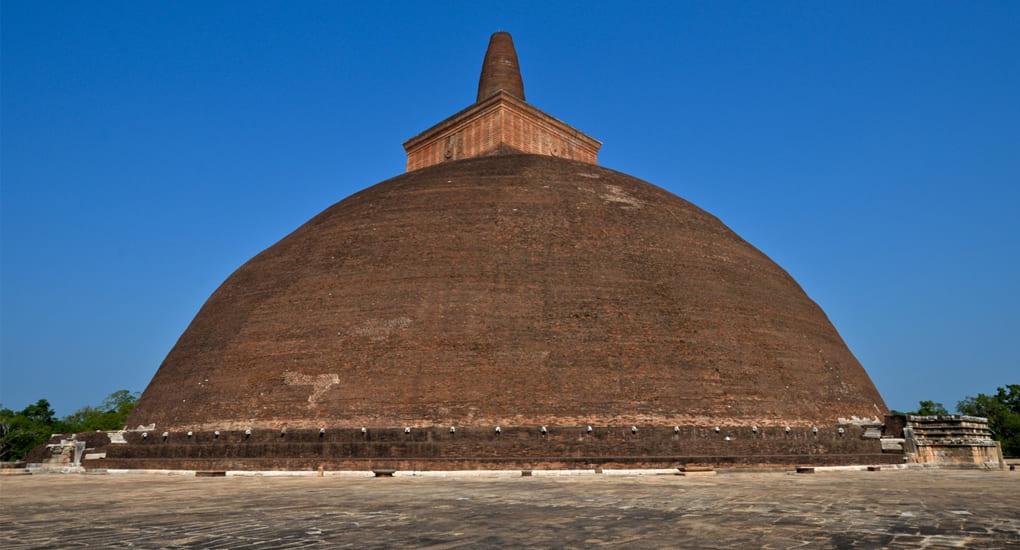Points of Interest - Anuradhapura
Abhayagiri Dagoba
Abhayagiri Buddhist monastic centre (Dagoba) by King Vaṭṭagāmaṇi Abhaya during the period of his second reign in 29–17 BC. It is situated in Anuradhapura, the capital of Sri Lanka at the time, where most of the religious and political power attracted. And due to the sheer number of monasteries congregated in one place the religion made a vast profane influence that changed the future. Abhayagiri Dagoba continues to flourish until Anuradhapura was abandoned in the mid-13th century.
The dagoba is rising over 75 meters and 106.6 meters in diameter at the widest point of curve. Chinese monk Fa Hiiyun who was also a Buddhist explorer and a researcher had also visited the dagoba in 412 AD, recorded evidence that there were about 4000 monks in residence at Abhayagiri complex, at the time.
The Abhayagiri Vihara developed as a great institution attracting scholars from all over the world and encompassing all shades of Buddhist philosophy, side by side with the Mahavihara and the Jetavana Buddhist monastic sects in the ancient Sri Lankan capital of Anuradhapura, where its influence can be traced to other parts of the world, through branches established.
According to the chronicles, the name Abhayagiri originated from of King Vattagamani Abhaya and of the Giri priests who lived in the monastery. It was the norm at the time to build monasteries on hillocks (Giri in Sinhala language) symbolizing and embodying the fact that the religion was considered most important and was put above everything. Considering above it is believed that the name could have originated to symbolize the monastery created by Vattagamani Abhaya after his recapture of the kingdom surrounding the hillock known as Digapasana, now inside the Abhayagiri complex.
Fact: Also, And Abhayagiri Dagoba was the choice to house the Buddha’s Tooth Relic brought to Sri Lanka during the reign of Kithsirimevan (303-331AD.)
